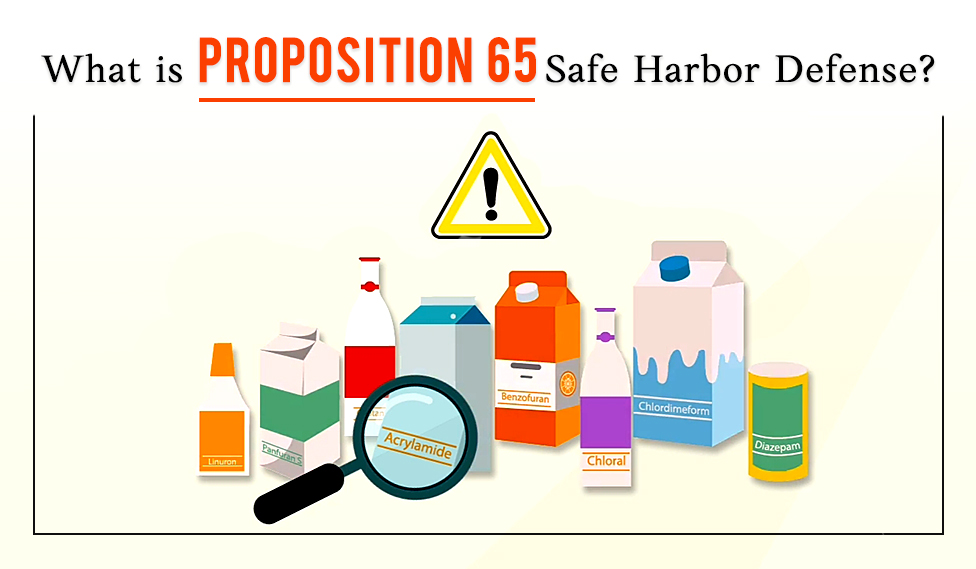
One of the most common defences under Proposition 65 is what is often called the safe harbour defense. In its simplest form the safe harbour defense says you don’t have to give a warning, if the daily exposure level in the question is lower than a level set by the state. The state’s safe harbour levels are mostly stated as exposure levels and not as the amounts or concentrations of a chemical in a product.
If you have a product that contains a proposition 65 chemical, this article helps in translating the amount of that chemical in your product to whether a chemical exposure from your product is likely falls below the state’s safe harbor level or an alternative but equally effective scientifically based limit that meets preposition 65 requirements.
How Does OEHHA(Office Of Environmental Health Hazard Assessment) Helps The Companies Through Introducing The Safe Harbor.
The Preposition 65 list is extensive, if we look into the list, we will find chemicals we have been using for years. If the product contains a chemical on the Preposition 65 list, we need to check first for safe harbour levels. OEHHA (Office of Environmental Health Hazard Assessment) has developed safe harbour levels (levels of exposure that trigger the warning requirement) for many of the Preposition 65 chemicals. It has established more than 300 safe harbour levels and continues to develop more levels for remaining chemicals in the list. These safe harbour levels are No Significant Risk Levels (NSRLs) for the chemicals listed as causing cancer and Maximum Allowable Dose Levels (MADLs) for chemicals listed as causing birth defects or other reproductive harm. We are supposed to check NSRLs and MADLs columns to check how much percentage, a chemical is present. If a chemical included in a product is over Safe Harbor level, a warning is required. A warning is required if a chemical in your product does not have a safe harbour level. The company is exempt from the warning requirements, if are having fewer than ten employees.
Many Business, Have A Query On How To Know If I Need To Provide A Warning On Proposition 65!
By using our knowledge of our business operations and the chemicals we use, need to review the Proposition 65 list to determine whether our operations or products are likely to expose individuals to any listed chemicals. Depending on the level of exposure, we are supposed to provide a warning for those exposures. In general, a business should combine known information about how consumers use their product and how they might be exposed to a listed chemical. For example, a tool might contain small amount of lead or other listed chemical in its paint. To determine whether the tool requires a warning, the product’s maker would need to consider both the concentration of lead in the paint and scientific information about how a customer might handle and thereby be exposed to the lead.
Does Safe Harbor Bans Phthalate Substances.
Safe Harbor for DEHP (Di(2-ethylhexyl) phthalate, DBP (Di-n-butyl phthalate), DnHP (Di-n-hexyl phthalate), DIDP (Di-isodecyl phthalate), BBP (Butyl Benzyl phthalate) have been established to assist businesses in determining whether a Proposition 65 warning is required. Proposition 65 does not ban the use of any of these chemicals, but does require warnings to consumers when exposures exceed the safe harbor level. Therefore, it is necessary to check the exposure levels as per the Preposition 65 list, along with a knowledge of safe harbor we will get the clarity of the each substance on they affect.
Sunstream Role Towards Proposition Safe Harbor Defense.
Sunstream Global Technologies specializes in providing solutions and services in various regulations including ROHS, REACH compliance, Prop 65, and Conflict mineral compliance. Compliance with Proposition 65 is getting challenging with respect to the new rules and requirements of supply chain management.
We help our clients, understanding their obligations and how exactly they can be met. Our solution experts helps in digging out the necessary information by cross checking with different important website portals and tools. We are also expertized in sourcing the required data from the suppliers. We are always updated on any changes in the regulations. We verify your products composition and exposure data with safe Harbor limits, which confirms, the need for any warning for such products. We also help in converting non- compliant products to compliant by identifying suitable alternates for the risky parts in your products.
Thank you.



 +1.585.935.7123
+1.585.935.7123 +91-804-148-6861
+91-804-148-6861